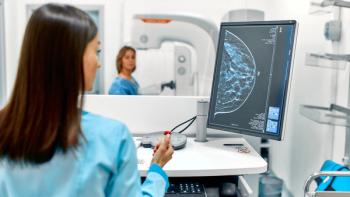
Nursing Hackathons Drive Innovations
Patricia Jakel, MN, RN, AOCN, reflects on the values of nursing Hackathons and encourages Hackathon participation from oncology nurses.
How does one describe a Hackathon? Many people do not truly understand what a Hackathon is about.
Hackathons started within the technology space in 1999 with coders and software developers. Obviously the format was very successful for that industry. Currently, the term Hackathons is used broadly as a way to problem solve with a diverse group of initiative people. The time frame for Hackathons has evolved from lasting just 1 weekend or a couple days into much longer period of time—some now span multiple weeks. Hackathons have also evolved to benefit industries beyond the technology space. Today, organizations such as the American Nurses Association, the Oncology Nursing Society, and Johnson & Johnson have organized and sponsored very successful nursing Hackathons.
Nurses are amazing problem solvers. It is therefore no surprise that nurses are leading innovations to improve healthcare. Organizations such as Johnson & Johnson have commended nurses for their ability to drive solutions by stating, “Hackathons can provide a unique experience for nurses to flex their innovation muscles and receive the support and motivation needed to bring their ideas to life and improve human health.”1
Hackathons are usually structured around a problem statement, where teams work towards innovative solutions. It is very helpful for a team to have a coder or a software engineer—especially with nurses, who most likely do not have experience with such work. A diverse team allows for innovation, problem solving, and the ability to try out the solution prior to a successful pitch. Most Hackathons are structured around design thinking which is an empathic, human-centered approach to innovation that has become prominent in design and business circles in recent decades. See the steps of design thinking listed below (Figure.):
Recently, I had the privilege of mentoring 3 teams (2-4 members per team) for the ONS/ONCC Virtual Hackathon. This annual 4-week event brought together a variety of oncology nurses from different backgrounds and specialties. It was a great experience and I have new nursing friends all around the country.
Oncology nurses, I encourage you to think about joining a Hackathon in the near future. Hackathons are interactive, energetic and fun. They allow for collaboration, innovation, and they allow nurses to do what they do best—solve problems in a patient-centered, cost-efficient manner. What a great learning and fulfilling opportunity! Come join the fun and be part of change in nursing.
References
- Nurse Innovation Hackathons. Johnson & Johnson Nursing. Accessed January 6, 2021. https://bit.ly/3t4GN5h
- Biomimicry and other design processes. Biomimicry toolbox. Accessed January 6, 2021. https://bit.ly/34uiXpx
Newsletter
Knowledge is power. Don’t miss the most recent breakthroughs in cancer care.




